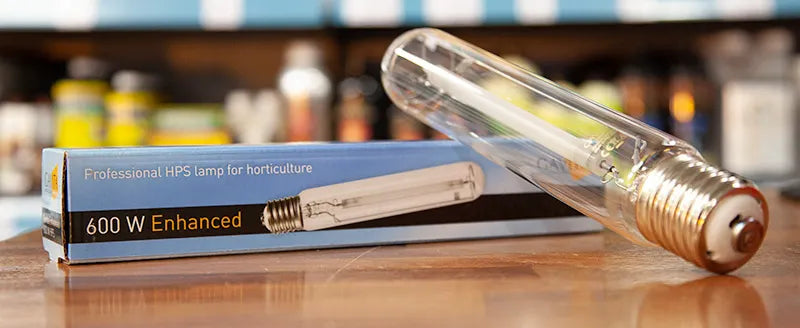Ever Wondered What the Difference Between HPS Lamps is?
There's a lot of different brands of HPS lamps on the market. Some come from well known brands such as Philips. Some come from brands that have been around for a very long time, like Sylvania Grolux. Others come from little known manufacturers such as Horti King.
A lot of growers out there would like to know that if they upgrade their budget lamp to a more professional model will it be worth the extra money? We'll trey to answer that question for you as best we can.
In our 230V HPS Lamp Shootout blog and our 400V HPS Lamp Shootout blog, we tested the outputs and spectrums of several different lamps. In both blogs we concluded that the more expensive lamps gave off more light and had better spectrums than the cheaper lamps.
What we didn't go into is how much extra yield that would translate into.
Before we can start to try to answer that question, there is something that we need to go into first. And that is will the extra light get used to maximum effect?
All About The Light Level
Strangely, there is no point giving plants too much light. We know the general thinking is "more light, more yield" but unfortunately, there comes a point of diminishing returns:
In other words the extra light is better spread over more plants in a bigger area than giving too much light to a few plants, if possible. Otherwise, after the point of diminishing returns, the extra light is not being used to the best effect.
Right, so if we invest in a premium lamp to replace a budget lamp, what can we expect in terms of yield increase (as long as we use the extra light to best effect)?
Well, let's take 2 of the lamps we showcased in our 230V HPS Lamp Shootout. One is a fairly typical budget lamp, The LUMii Black. The other is the premium Philips Greenpower Son-T.
In our test the LUMii Black produced an intensity of 747 umols/sec/m2 at a particular point beneath a reflector set to a certain height. Measuring the at the same point and at the same height the Philips Greenpower produced an intensity of 818 umols/sec/m2.
The intensity at that point is directly proportional to the total amount of light that the lamp is producing.
This means that the Philips Greenpower is producing 818/747 = 9.5% more light. So, if you are using all that extra light to best effect, and everything else being equal (environmental conditions, strain of plant etc.), you can expect 9.5% more yield from the premium lamp compared to the budget lamp.
All About The Spectrum
How much PAR light an HPS lamp kicks out for each watt of electricity it uses is obviously incredibly important. However, there is another aspect to a lamp's performance which is also very important and that is the specrum of the light that it outputs. That's true for all grow lights, not just HPS lamps. HPS has traditionally been the go-to system for flowering plants indoors. That is partly because they are the most efficient HID lights in terms of PAR light per watt. It is also because the light is concentrated in the orange-red part of the spectrum which is highly productive. for good yields.
The main difference between a budget lamp and a Pro lamp is the width of the red region towards the upper end, as you can see in the following 2 spectrum graphs. The one on the left is the Budget Firefly. The one on the right is the Premium Philips Son-T lamp.
Budget Lamp:
Pro Lamp:
Apart from the fact that the Philips lamp is a lot brighter (watt for watt) than the Firefly, you can see from the graphs that the spectrum of the Philips is a lot fuller too. A critical wavelength for photosynthesis is 700nm. There are 2 photosystems in plants there is Photosytem 1 (PS1 or P700) and Photosytem 2 (PS2 or P680). PS1 absorbs light at about 730nm and PS2 absorbs light at 680nm and below. When both photosystems are activated there is more photosynthesis than the sum of the parts. It is therefore important to have sufficient light at 700nm in order to optimise photosynthesis.
Notice how at 700nm the Philips lamp is emitting light at about 7% of the maximum light intensity. However, the budget Firefly only emits about 2% of the maximum intensity. This alone means that more photosynthesis will be stimulated with the Philips than the Firefly. You can read more about the photosystems in this blog Here.
Conclusion
With an increase of around 9% more light with a Premium lamp than a Budget model along with a better spectrum, you can expect to get anything up to 11% more yield. Yes, the premium lamps do come with a higher price tag (at £45 they may cost up to 3 times more than a £15 budget model). However, if the price of the 11 more in yield is more than £30 then it is a no-brainer to use premium lamps.

